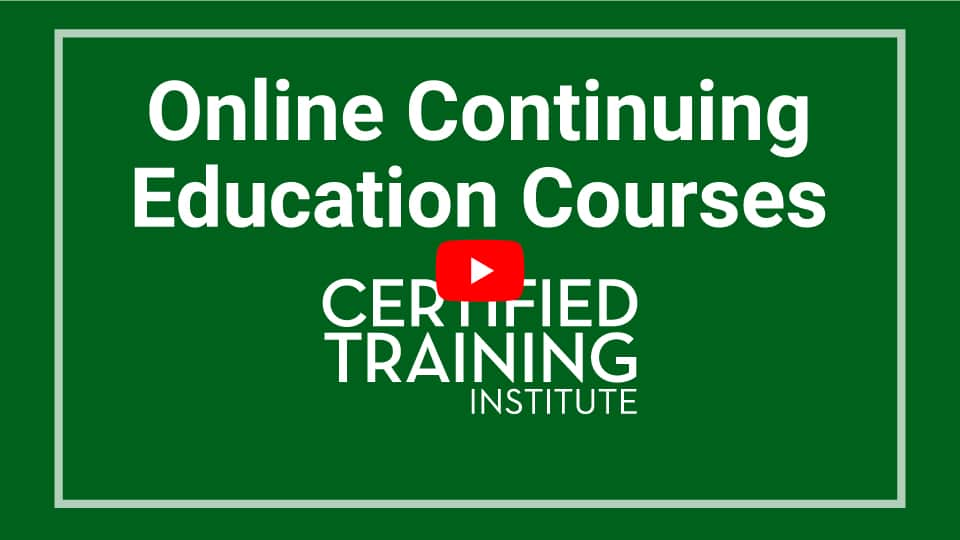Pesticide Applicator Continuing Education
Courses must be completed by 11:59pm EST 12/31, annually
Each course includes an official certificate of completion that you can save for your records. Looking for state reporting information? Learn more here.
Renewal Deadline: Structural applicators' licenses expire when their employer business license expires. CEUs must be completed the previous calendar year (Jan 1 - Dec 31) to be eligible to renew. Applicators do not have to obtain CEUs during the first calendar year they are certified.
CE Requirements: Structural applicators must complete two CEUs in general training and one in each category in which the applicator is certified. Of the two general category units, at least one must be in federal and state laws, pesticide safety, environmental protection, or integrated pest management.
No course may be repeated for credit within the same recertification year.
Bed Bug Health Effects & Control
Bed bugs are a common and difficult household pest that can be linked to a number of health effects such as psychological issues, cutaneous reactions, allergic reactions, anemia, and potential disease transmission. This course outlines various management methods for bed bug control and treatment as well as common symptoms and signs of health effects caused by the presence of bed bugs.
Biology of Termites and Other Wood-Destroying Pests
The course will provide an overview of the biology of termites, for example, growth development, colony distribution, and their roles.
Common Turfgrass Weeds
Managing weeds in a turf stand can be a tricky proposition. Often times the client fails to recognize that the presence of weeds in a turf stand is the result of poor turf, not the cause. This course will provide applicators with a working knowledge of weed biology, weed identification, and how herbicides work.
Environmental Fate and Transport of Pesticides
Pesticides are a key factor in pest management but it is important to understand what happens to those pesticides after the application. This course will review some key characteristics of environmental factors that can affect how pesticides move and degrade in the environment.
German Cockroach Control
German cockroaches can be a difficult pest to control. The temptation for most pest control operators is to reach for the pesticide right away, but there is much more involved in controlling a German cockroach infestation. This class will focus on an eco-friendly approach to German roach control strategies in the most difficult environments.
IPM for Ornamental Plant Pest Management
IPM of ornamental plants involves multiple steps; producing a healthy plant, correctly identifying the problem, recognizing that there will always be some pests and damage, and only using pesticides as a last resort. This course teaches the basics of pest and disease management for ornamental plants, and the different tools and techniques needed to successfully provide your clients with a healthy and attractive landscape.
IPM for Termite Prevention
Termites are one of the most destructive pests in the United States. But there are several common-sense IPM practices that can be implemented to make a structure less inviting to termites from the start. This course will provide a review of IPM principles, termite biology, and several IPM practices to make any structure less attractive to termites.
IPM Practices for Landscape Pest Management
This course discusses benefits and considerations for Texas pesticide applicators to consider when developing an agricultural integrated pest management (IPM) program. Topics include a variety of pest-management methods, such as mechanical and cultural control, sanitation, augmentation, and pesticide use.
Non-Termite Wood Destroying Insects and Fungi
Termites are just one of the many wood-destroying pests found throughout the United States. Carpenter ants, powderpost beetles, and wood-damaging fungi can also cause severe structural damage if not properly managed. This course will cover the primary non-termite wood-destroying pests found throughout the country, the recommended treatments for each of those pests, and the primary sources of excess structural moisture.
Ornamental Pesticide Application Equipment and Calibration
When pesticide applications become necessary for good ornamental plant management it's important to understand how application equipment works and how to properly calibrate the equipment. This course will discuss the most common types of equipment used for pesticide applications on ornamental plants, the way to calculate the volume of solution needed, and how to properly calculate the flow rate of the equipment.
Personal Protective Equipment and Emergency Response
Wearing PPE can reduce exposure (dermal, inhalation, ocular, or oral) and thereby lower the chances of pesticide injury, illness, or poisoning. It is important that all pesticide applicators and handlers understand the protections and limitations of PPE.
Pest Management
A pest is an undesirable organism that injures humans, desirable plants and animals, manufactured products, or natural substances. This course will discuss the importance of pest identification in pest control, describe how pest population levels trigger control procedures and give several reasons why pesticide applications may fail.
Pesticide Emergency Management and Environmental Protection
Learn best practices for public and environmental safety in pesticide use with this course. Texas pest managers can protect against pesticide emergencies with safe and legal pesticide handling. Notify the public, post warning signs, prepare a management plan and make careful choices to minimize the threat of unintentional exposure.
Pesticide Labels and Safety Data Sheets
Pesticide labels and safety data sheets (SDS) appear to contain much of the same information. While the label is the law, an SDS is not considered the law. As an applicator, it is important to understand the difference between a pesticide label and a safety data sheet and know what information can be found in each document. This course will review the various parts of pesticide labels and safety data sheets to identify the similarities and differences.
Review of Pesticide Use Hazards
This course teaches pest managers in Texas how to recognize and minimize pesticide use hazards. From the signs of human exposure to the classification of pesticides based on toxicity, this course offers important tools to safeguard people, wildlife and the environment.
Turfgrass Disease, Insect, and Vertebrate Pests
There are a variety of diseases, disorders, insects, and vertebrate pests that can cause problems in turfgrass. This course will give applicators and turf managers an overview of these common pests and strategies for their management.

